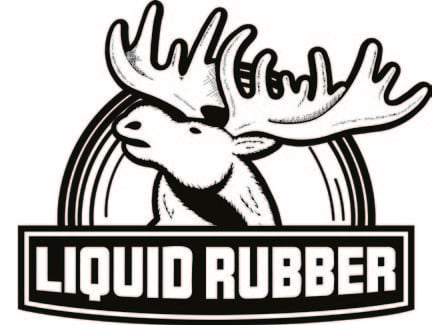Gutters FAQUpdated a year ago
Application
Question: Which products do I use?
Answer: Liquid Rubber Waterproof Sealant is typically used for this application.
Question: Do I need primer?
Answer: Primer is always better, but it is often not used for application to gutters when using Liquid Rubber Waterproof Sealant, except where an EPDM liner is used, in which case you would need to use Liquid Rubber EPDM & TPO Primer.
Question: How much do I need?
Answer: 3 Heavy coats are what is typically recommended for gutters. To help you calculate what you need, calculate it at 1 gallon per 20 sq ft., click here.
Answer: To determine how much sealant or primer you need, divide your total square footage by the coverage rate provided. Example: You have 40 sq ft of surface area and the Waterproof Sealant coverage rate is 1 gallon per 20 sq ft. so 40/20 = 2 gallons of the Waterproof Sealant. (Apply in multiple coats until all material has been used.). Coverage rates are expressed in final coverage and will include all coats needed to achieve membrane thickness.
Question: Do I need Liquid Rubber Seam Tape or Liquid Rubber Geo-Textile?
Answer: Yes. Liquid Rubber Seam Tape or Geo-Textile is recommended to reinforce the joints/seams, cracks, etc. against thermal and other movement. These are the area's most likely to leak.
Question: What tools do I need to apply my Liquid Rubber products?
Answer: Most of our coatings and primers are applied using a brush or 10mm (3/8") nap roller.
Question: Do you have application guidelines/instructions to help me with my installation?
Answer: Yes. Application guidelines can be found on our project pages (click here) or on our product pages (click here).
Question: Do you have application videos to help me with my installation?
Answer: Yes. Application videos can be found on our project pages (click here) or on our YouTube channel (click here).
Question: Do I need a new brush/roller every time I apply a new coat?
Answer: If you wrap your brush/roller in plastic (e.g. a grocery bag) you will slow down the curing process and you should be able to use the same brush/roller for your next coat. You can go a step further and place the plastic bag in the refrigerator (Do not allow contact with food)
Question: Can Liquid Rubber products be applied to metal, galvanized metal or aluminum?
Answer: Yes. With proper preparation and cleaning Liquid Rubber products will protect and waterproof your metal roofs and structures. Liquid Rubber MetalSafe and Liquid Rubber Color Sealant are most often used for waterproofing metal. Refer to our application guidelines for more information.
Question: Can Liquid Rubber products be applied to Fiberglass?
Answer: Yes. Liquid Rubber products are often applied to fiberglass. As fiberglass formulations can vary a test patch is recommended to confirm adequate adhesion prior to full application.
Question: Can I coat over an existing coating or paint?
Answer: You can apply over most acrylic/latex, polyurethane, alkyd paint, epoxy paints/coatings. An adhesion test may be recommended to ensure adequate bond prior to full application.
Answer: It is recommended to remove oil based or recently applied coatings with high solvent content prior to applying your Liquid Rubber products. (oil and water don't mix and solvents can deteriorate our water-based coatings)
Question: Can Liquid Rubber products be applied to concrete?
Answer: Yes. Liquid Rubber products bond very well to concrete. The concrete must be fully cured, free of laitance and efflorescence and have a moisture content of less than 5%. Liquid Rubber Multi-Purpose Primer may be required. Refer to our application guidelines for more information.
Question: What if I have a problem or question with an application?
Answer: Our technical support team is here to help you, just reach out to call. email or chat with one of our representatives.
Answer: You very well may find the answer you are looking for in one of our application guidelines, which can be found on our project pages here.
Question: Does it come with a warranty?
Answer: Gutter applications come with a 5 year warranty when properly installed.
